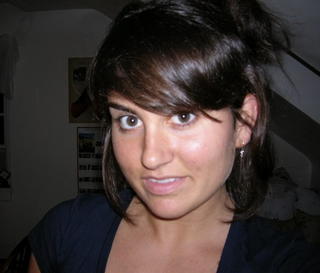Deleting EP2 Could Be Good For You
-Hopkins Study Finds Deleting EP2 Receptor Reduces Symptoms of Alzheimer’s in Mice-
Scientists at Johns Hopkins recently discovered that deleting a single receptor in the brain reduces symptoms in mice with the equivalent of Alzheimer’s disease. The discovery might lead to development of anti-inflammatory therapies safer than those currently used in Alzheimer’s prevention, the researchers say.
Alzheimer’s disease is a gradually worsening condition that impairs older people’s ability to carry out daily tasks, eventually stealing all ability to function. Though scientists associate certain changes in brain tissue with the disease (i.e. plaque build-up and nerve cell inflammation), they still don’t know what causes it, nor is there a cure.
Research suggests that drugs like ibuprofen and naproxen prevent symptoms of Alzheimer's. Unfortunately, chronic use of these drugs, non-steroidal anti-inflammatories known as NSAIDs, can cause side effects like gastric ulcers and intestinal bleeding. Additionally, COX-2 inhibitors, a specific type of NSAID, can cause serious cardiovascular problems. Last December, the U.S. Food and Drug Administration withdrew the COX-2 inhibitor Vioxx from the market and issued a health advisory for those COX-2 inhibitors remaining on shelves.
This new work, however, suggests that Alzheimer’s symptoms could be prevented, without incurring negative side effects of NSAID use, by blocking a prostaglandin receptor known as EP2. The findings are described in a recent issue of the Journal of Neuroscience
“This is just the beginning of a model for treating Alzheimer’s,” emphasized Johns Hopkins neurologist Katrin Andreasson, “but the identification of downstream prostaglandin pathways that function in Alzheimer’s disease should assist in development of anti-inflammatory therapies that are more selective than NSAIDs.”
In general, NSAIDs work by inhibiting the cellular pathway that promotes inflammation, a hallmark of Alzheimer’s disease. “They inhibit the formation of the mother of all prostaglandins, molecules that cause swelling” Andreasson explained, and they do this by first inhibiting activity of the enzymes COX-1 and COX-2.
But because inhibiting COX enzymes has lead to health problems, Andreasson’s group studied downstream components of the COX pathway in their search for treatment. Earlier work in the field suggested an important role for one such component, the prostaglandin PGE2. Levels of this prostaglandin, which has EP2 as its receptor, are elevated in patients with probable Alzheimer’s This observation suggested that PGE2-EP2 signaling may function in Alzheimer’s development, and so the researchers developed a mouse that would be insensitive to PGE2’s effects by EP2, its receptor.
“The EP2 receptor,” explained Andreasson, “provides a novel and selective target for development of therapies in Alzheimer’s. There are no EP2 antagonists available now.”
Dr. Richard Breyer of Vanderbilt University knocked out EP2 in a population of mice. He found that their brains exhibited less inflammation and plaque build-up than did brains of mice with the EP2 gene intact.
Inflammation was measured by observing brain levels of free radicals, harmful oxygen species that disrupt neurons. Free radicals are generated indirectly by EP2; as Andreasson explained, “EP2 activation elicits an innate immune response in supporting cells in the brain,” and part of this immune response is free radical production. The study showed that mice without EP2 had significantly lower levels of free radicals in their brains, correlating to reduced inflammation.
The researchers also assayed plaque deposition, a second hallmark of Alzheimer’s. Since free radicals boost activity of the enzyme that breaks plaque precursor protein into the smaller proteins forming plaques, the presence of free radicals (like those generated in EP2-PGE2 signaling) causes plaque build-up. The study found that deleting EP2 reduced this phenomenon up in mice.
Since EP2 deletion reduced symptoms of Alzheimer’s without interfering with COX activity, blocking it might help prevent Alzheimer's disease, while simultaneously avoiding health risks associated with NSAID use. “This work may be the mechanism by which NSAIDs prevent Alzheimer’s,” said Andreason.
She admits that there’s still more work to do, however. “We are looking at the function of other prostaglandin receptors in the Alzheimer’s mouse model.”
The researchers are also curious about the exact mechanism- direct or indirect- by which EP2 activation leads to plaques. “We are still trying to figure out exactly how the EP2 receptor promotes increased oxidative stress associated with free radicals,” Andreasson said. “We’re trying to figure out whether we can target those pathways therapeutically, too.”
The researchers were funded by the American Federation for Aging Research and the Nancy and Buster Alvord Endowment. Authors on the paper are Andreasson, Xibin Liang, Qian Wang, Tracey Hand and Liejun Wu of Johns Hopkins; Thomas Montine of the University of Washington, Seattle; and Breyer, Vanderbilit University.
.MGW.

